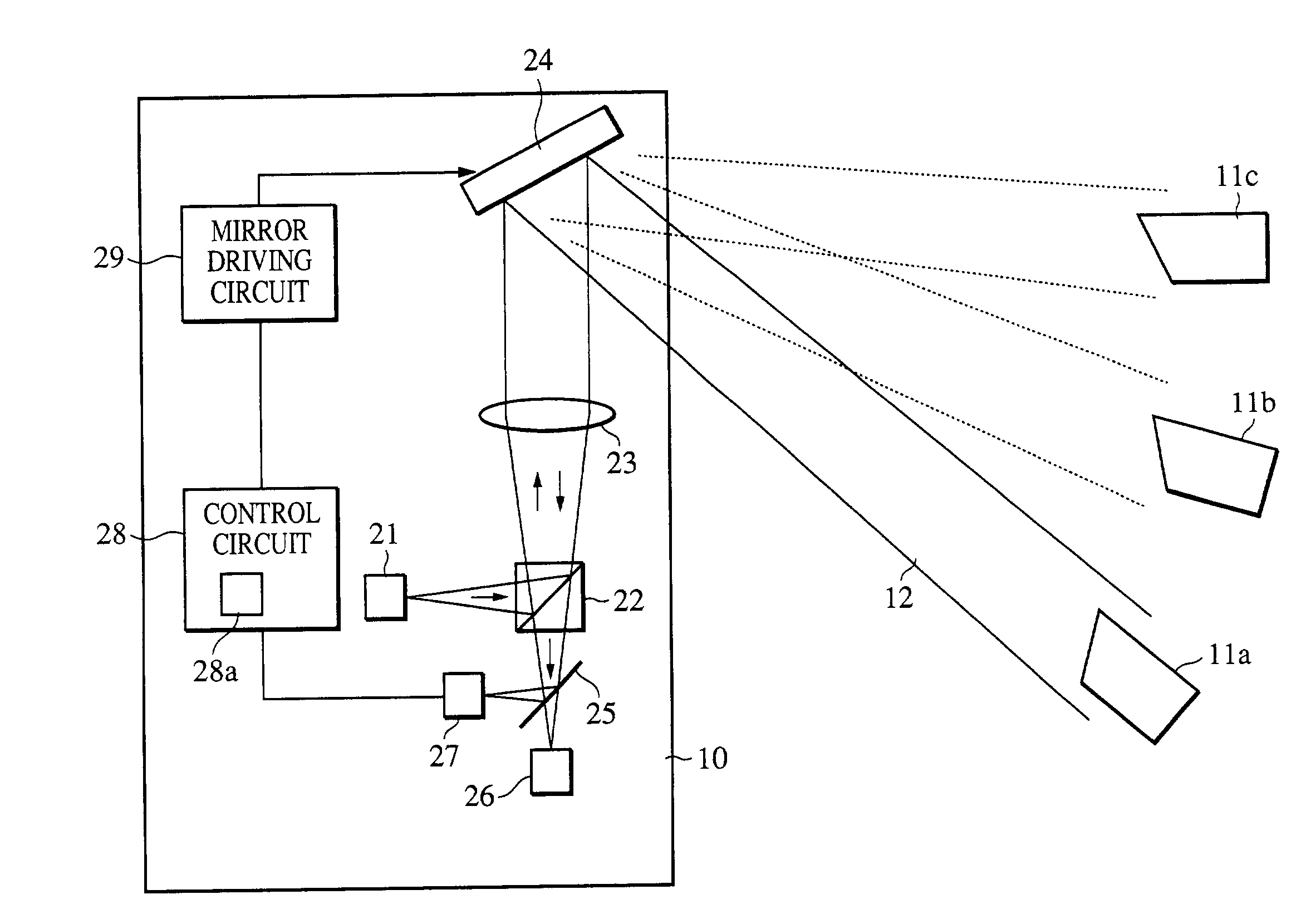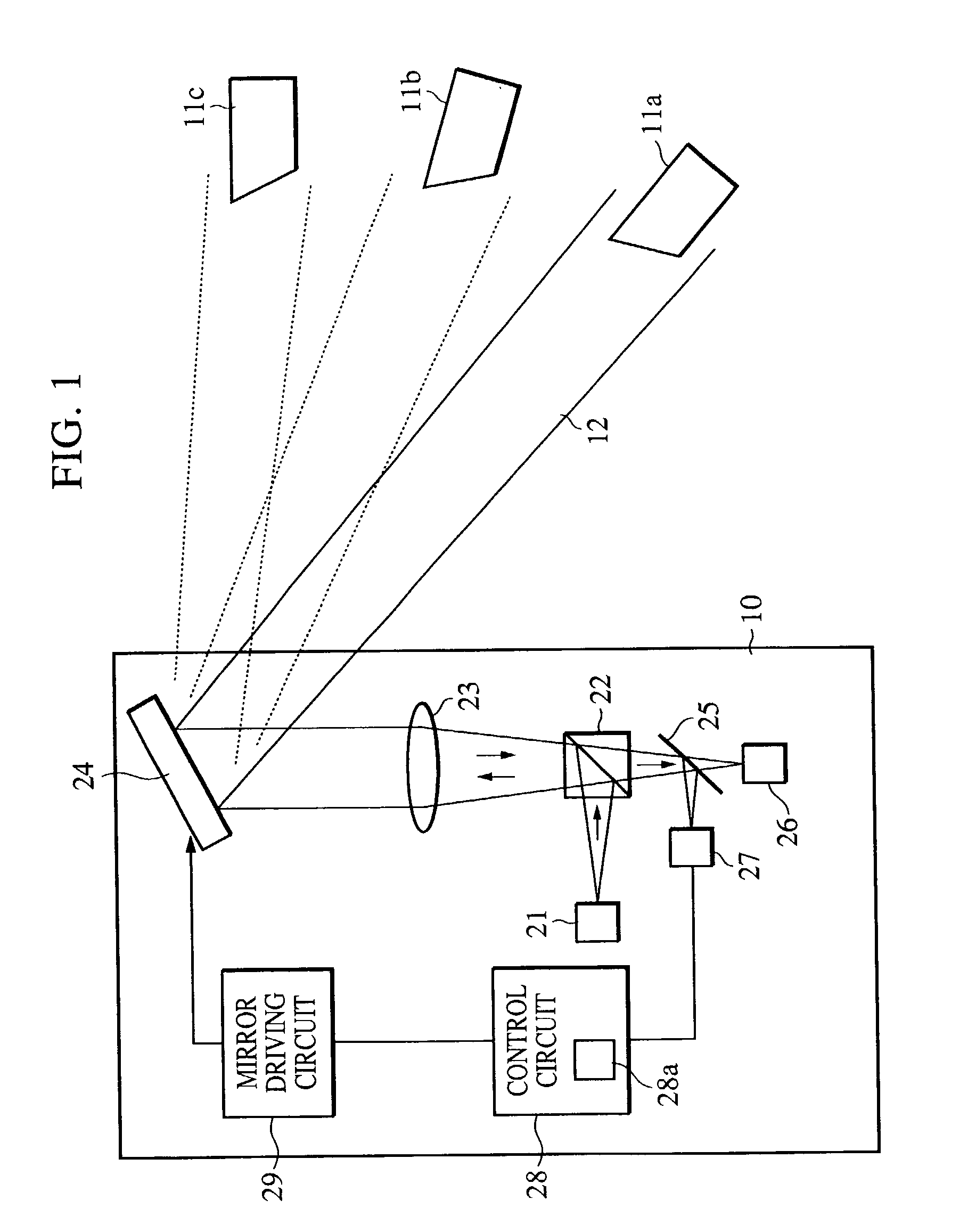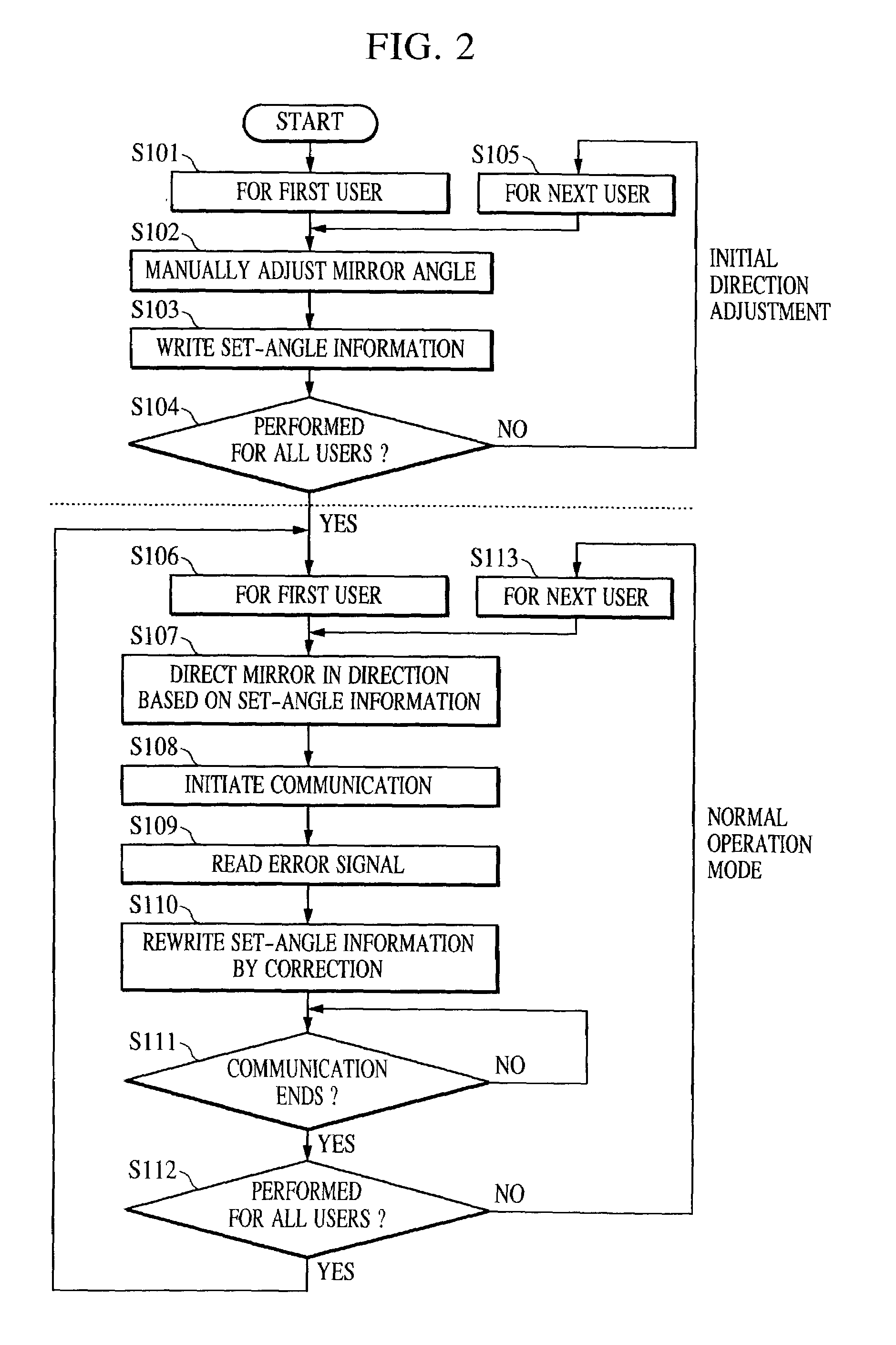Free-space optical communication apparatus and free-space optical communication system
- Summary
- Abstract
- Description
- Claims
- Application Information
AI Technical Summary
Benefits of technology
Problems solved by technology
Method used
Image
Examples
first embodiment
[0031]FIG. 1 shows the configuration of a free-space optical communication system according to a first embodiment of the present invention. This system includes a base apparatus 10 (free-space optical communication system). The base apparatus 10 sequentially scans an optical beam 12 over a plurality of other communication apparatuses 11a, 11b, and 11c, and performs bidirectional wireless communication with each of the communication apparatuses 11a, 11b, and 11c.
[0032]In the first embodiment, the communication apparatuses 11a to 11c are cyclically scanned in the order of the apparatus 11a, the apparatus 11b, the apparatus 11c, the apparatus 11a, . . . , in such a way that the apparatus 10 initiates communication with the apparatus 11b when ending communication with the apparatus 11a, and initiates communication with the apparatus 11c when ending communication with the apparatus 11b.
[0033]However, any scanning order may be used in the present invention. The present invention may use...
second embodiment
[0054]FIG. 3 is a flowchart showing a control process performed by an base apparatus included in a free-space optical communication system according to a second embodiment of the present invention.
[0055]Initial setting on the mirror angle in the setting of the apparatus 10 is similar to that in the first embodiment. However, in the first embodiment, if the posture of the apparatus 10 changes due to external force, etc., in the normal operation mode, actual correction of the mirror 24 is not performed until the next scanning of each user. Thus, the communication condition may depart from the optimal condition when the apparatus 10 has a large posture change.
[0056]Accordingly, in the second embodiment, when the error signal is large and exceeds a predetermined range, driving (i.e., the automatic tracking operation) for correcting the angle of the mirror 24 for a user with which the apparatus 10 is communicating is immediately performed (fist control mode). After ending the communicati...
third embodiment
[0060]Although the second embodiment has described a case in which the first control mode or the second control mode is automatically selected by the control circuit 28 based on whether or not the error signal is out of the predetermined range, the first control mode or the second control mode may be selected, as required, by a user's operation.
[0061]This makes it possible to freely give higher priority either on the use of the first control mode to always communicate with each user at the optimal mirror angle, or on the use of the second control mode to perform high speed scanning without preventing each user from being aware of any delay, whereby flexibility in operating the free-space optical communication system can be enhanced.
PUM
| Property | Measurement | Unit |
|---|---|---|
| Angle | aaaaa | aaaaa |
Abstract
Description
Claims
Application Information
 Login to View More
Login to View More - R&D
- Intellectual Property
- Life Sciences
- Materials
- Tech Scout
- Unparalleled Data Quality
- Higher Quality Content
- 60% Fewer Hallucinations
Browse by: Latest US Patents, China's latest patents, Technical Efficacy Thesaurus, Application Domain, Technology Topic, Popular Technical Reports.
© 2025 PatSnap. All rights reserved.Legal|Privacy policy|Modern Slavery Act Transparency Statement|Sitemap|About US| Contact US: help@patsnap.com



